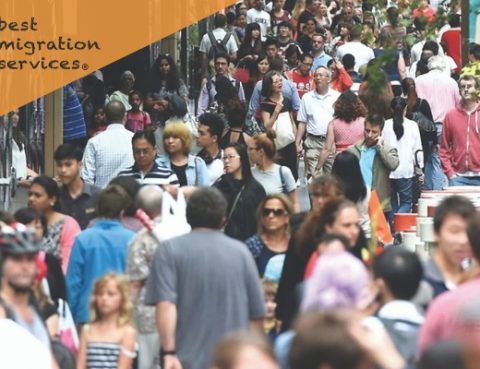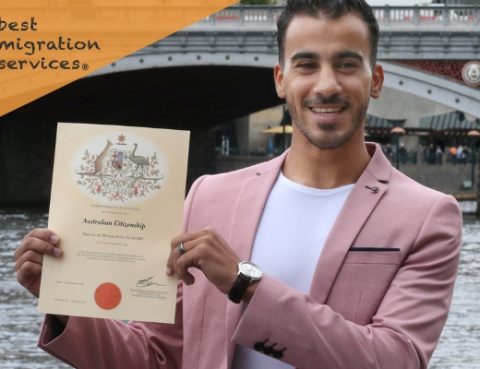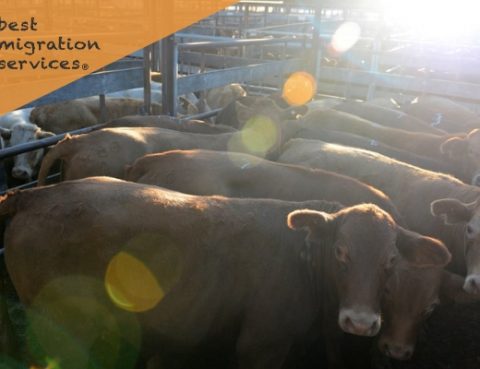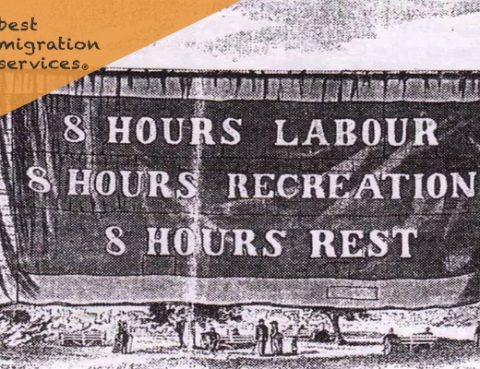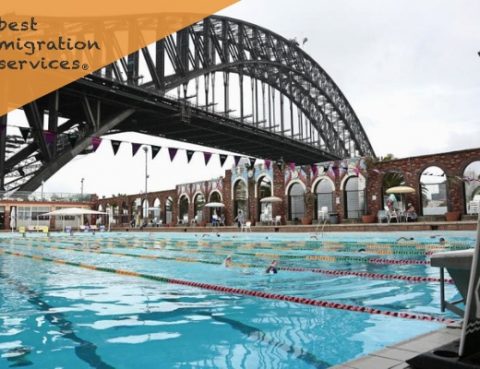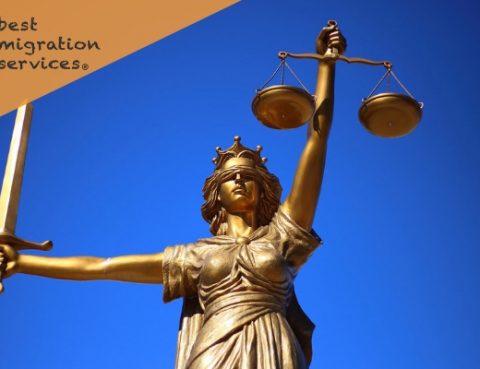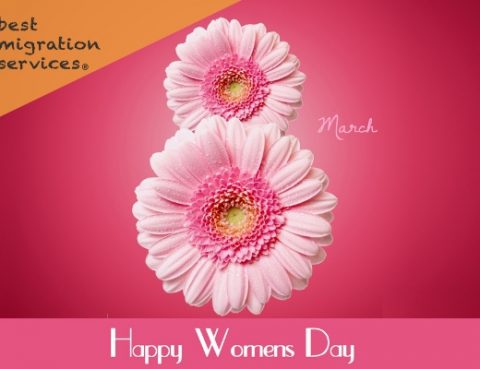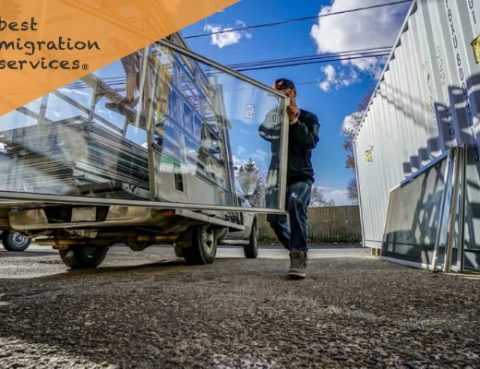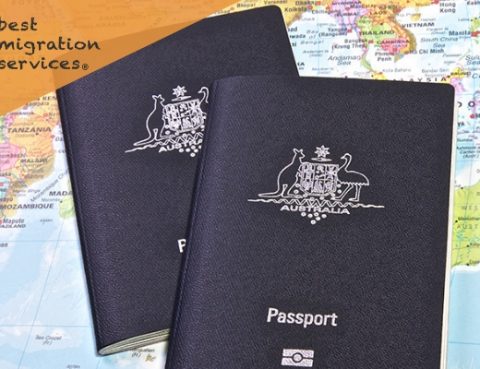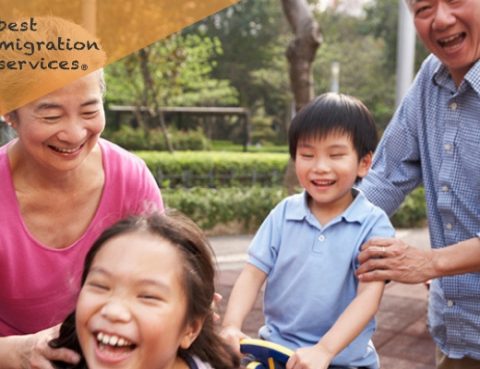New Immigration Lawyers or a Fresh MARA registered Migration #Agents – Don’t know how to take your business or practice further?
Book your future with our #BMS Team Now +61499988219
Come join Best Migration Services (BMS Migration) who has more than 1500 successful happy clients all over the world and have an ocean of knowledge of all types of Australian Visas like but not limited to offshore #PR Applications, onshore #Student to PR Applications, TR Applications, #Work #Visa applications, RRV Applications, #AAT Applications, etc…
By joining BMS Migration, BMS will provide you complete help in becoming a successful #Australian migration agent and by accommodating you in our BMS Migration Services umbrella you will have access to
– All BMS Technical knowledge
– BMS IT Infrastructure
– BMS client Process – BMS testimonials and credentials
– Legal Contracts with clients
– Payment gateway facility
– Handholding guide through your clients process
– Dedicated experienced Migration Agent to assist
– Constant Marketing in your region to get you leads
– Your exposure on BMS website and Social Media in Australia and throughout the globe and many more other benefits
Happy International Woman’s Day 2019
If you’re a skilled trade worker and would like to move to Australia we have some good news, you’re in high demand.
Whether you’re a builder, carpenter, electrician, or specialise in any of the other key trade sectors – your skills are highly sought-after. Right now, Australia is experiencing a severe shortage of glaziers. If you’re under 45 and have relevant work experience, you could be eligible for an Australian visa.
Australia’s high quality of life, prosperous economy and diverse population makes it a popular choice for immigration. Job opportunities in Australia can be plentiful if you’re skilled in a specific trade.
Glaziers have been identified as being in short supply and therefore added to the Medium and Long-term Strategic Skilled List (MLTSSL). The occupations on this list are ones considered in high demand in Australia. If you qualify, this is a relatively easy way to move Down Under.
What’s driving the demand for glaziers?
The construction industry is one of the largest growing sectors in Australia. From 2016 to 2017, construction in the non-residential building industry rose by 4%. The current supply of trade workers is not enough to meet the demand, which is why the need for glaziers has increased significantly. According to recent research, 45% of positions remain unfilled after 60 days due to a lack of skills and qualifications in Australia.
How do you move to Australia as a glazier?
Australia has a variety of visas for skilled migrants wanting to make a permanent move Down Under. The first thing you need to do is to figure out which visas you may qualify for. If you want to move to Australia to work as a glazier, you could be eligible for the following visas:
- Employer Nomination Scheme (subclass 186)
- Skilled Independent visa (subclass 189)
- Skilled Nominated visa (subclass 190)
- Skilled Regional (Provisional) visa (subclass 489)
- Temporary Skilled Shortage visa (subclass 482)
To see if you qualify for a visa you must determine if you have the required points. Points are awarded to applicants based on age, qualification, experience and English language skills. Your occupation is the basis for your eligibility. This means that if your job is in demand, you will have more visa options.
How to qualify for a Skilled Independent visa (subclass 189 visa)
The Skilled Independent visa is a permanent residency visa and one of the most desired visas too. If you qualify for one, you can stay in Australia indefinitely. One of the greatest benefits of this visa is that you can bring your family with you and they too will be able to live, work and study in Australia, as well as enrol in Medicare, Australia’s national healthcare scheme.
To qualify for this visa, you’ll need to get 70 points. A typical points assessment for a skilled glazier might look like this:
- Age: 25 points (if you’re between the ages of 32 and 40 years)
- Qualification: 10 points (trade diploma required)
- Experience: 15 points (at least eight years’ experience is required)
- English language: 20 points (IELTS, eight in each band required)
To achieve 70 points is very difficult and the English language test is quite often a what prevents skilled tradespeople from qualifying for the skilled independent visa.
The Temporary Skilled Shortage visa (subclass 482 visa)
This is a temporary work visa and is not points-based. It allows you to live and work in Australia for four years. After you’ve worked for your employer for three years, you could be eligible for permanent residency.
Before you can apply for this visa, you’ll need an employer in Australia who is willing to sponsor you. You will also need to have:
- A relevant trade qualification and two years’ experience, or at least three years’ experience (no qualification required)
- Competent English language skills (equivalent to IELTS 5 in each band)
Since the criteria for the Temporary Skilled Shortage visa is far less than the Skilled Independent visa, with the fact that you have a job immediately upon arrival, makes it an attractive option for those that can find a suitable employer to sponsor.
Making a successful move to Australia
Making an international move is exciting but can also involve a lot of red tape. It’s best to get in touch with a MARA-registered Australian migration agent who can assess your situation and advise you on which visa would suit you best. A registered migration agent can also assist you throughout the application process, ensuring that your visa application is 100% correct and you don’t waste unnecessary time and money only for your application to be denied.
[insert page=’footer’ display=’content’]15th October 2018 By Sam Hopwood*
One of the most sought-after Australian visas is the Skilled Independent visa (subclass 189). This visa allows you and any dependants to live and work in Australia permanently with virtually no restrictions. If your skills are currently in demand in Australia, you might just be able to get your hands on one.
Is your job on the list?
The Australian skilled occupations list is a list of all of the jobs that are currently in demand in Australia. If your occupation is on the list and you meet the relevant criteria, you could be eligible for one of the most coveted permanent residency visas, the Skilled Independent visa (subclass 189).
These are five of the most in-demand jobs in Australia right now, so if you have these skills, now is the perfect time to apply for this visa.
- Engineers
- Secondary School Teachers
- ICT Security Specialists
- Actuaries
- Construction Project Managers
- Depending on your level of expertise in your specific field, you could start earning a tidy sum in Australian Dollars from the moment you get to Australia.
The benefits of the Skilled Independent visa
The Skilled Independent visa is a permanent residence visa, so you can stay in Australia indefinitely once you have been granted this visa. What’s more, you can bring your family with you on this visa and they too will be able to live, work and study in Australia, as well as enrol in Medicare, Australia’s national healthcare scheme.
The Skilled Independent visa route is one of the best ways to get your new life started in Australia. If you have the relevant skills, it’s advisable to apply sooner rather than later, as the DIBP updates the list of eligible skilled occupations on a regular basis.
How to get a Skilled Independent visa
The first thing you will need to do is submit an Expression of Interest (EOI) to the Australian Department of Immigration and Border Protection (DIBP). The EOI will need to detail your nominated occupation, skills and qualifications. If your EOI is accepted, you will be invited to apply for the visa. You will have 60 calendar days to apply for the visa after you have been invited.
In the second stage of the application, you will need to:
- Obtain a skills assessment for your occupation
- Meet the immigration points test pass mark of 65 points
- Take the English language test
- Be under 45 years old
- Meet the health requirement
- Be of good character
Most Australian visa applications fail not because applicants are ineligible, but rather due to a lack of documentary evidence. An experienced MARA-registered Australian migration agent can ensure your application is presented correctly, so that you don’t waste time and money on an unsuccessful application.
Moving to Australia and settling there isn’t a straightforward process by just putting in a visa application. The process is complex and is best only handled by Australian Registered Migration Agents or Australian Immigration Lawyers.
Best Migration Services, through its associate offices handholds their migration clients especially from Dubai Abu Dhabi – United Arab Emirates and India, throughout its Permanent Residency Visa programs and process. Migrants from Dubai Abu Dhabi – United Arab Emirates and India that apply their Migration to Australia through BMS and its business associates and partners – FBP International, also provide end to end Australian Settlement services like but not limited to, home stay, long-term and short term accommodations, orientation of Australia and its lifestyles, job search, acquiring or takeover qualifying businesses either self-managed and/or co-managed businesses with lucrative returns and providing and helping them get an Australian Citizenship.
Migrants from Dubai Abu Dhabi – United Arab Emirates and India who are Interested in migrating and settling in Australia and/or doing Business or Investing in Australia with assured good return of investments, please contact our associate office in Dubai, [email protected] or call us on +971507513997, +971 56 806 2417 (UAE) or +61499914288 (Australia)
On 1 March 2019, Minister Coleman announced that applications to sponsor a parent for a Sponsored Parent (Temporary) visa will be open from 17 April 2019.
Once a sponsorship application has been approved, a sponsored parent will be able to apply for a Sponsored Parent (Temporary) visa. Applications for the visa are intended to open from 1 July 2019
The visa provides parents with a new pathway to temporarily reunite with their children and grandchildren in Australia, while ensuring that taxpayers are not required to cover additional costs. The visa responds to community concerns about the limited number of Parent places in the migration program and associated lengthy waiting periods.
To be eligible for the visa, a parent must be the biological, adoptive, or step-parent of the sponsor, who must be an Australian citizen, Australian permanent resident, or eligible New Zealand citizen.
The following information is subject to introduction of supporting regulations.
General information
The visa provides parents with a new pathway to temporarily reunite with their children and grandchildren in Australia, while ensuring that taxpayers are not required to cover additional costs. The visa responds to community concerns about the limited number of Parent places in the migration program and associated lengthy waiting periods.
To be eligible for the visa, a parent must be the biological, adoptive, or step-parent of the sponsor, who must be an Australian citizen, Australian permanent resident, or eligible New Zealand citizen.
Sponsorship applications can be lodged from 17 April 2019. When a sponsor has been approved, the visa applicant will then be able to lodge their visa application. Visa applications must be lodged within six months of sponsorship approval and cannot be lodged until a sponsor has been approved.
Sponsorship and visa applications must be lodged online through ImmiAccount.
Benefits of the new pathway
The visa allows parents to remain in Australia for a longer period of time, up to five years at a time without departing. It provides an alternative option to Visitor visas which only allow shorter periods of stay. Parents are still eligible to apply for Visitor visas and/or permanent Parent visas.
While the Sponsored Parent (Temporary) visa allows for a significantly longer stay period than a visitor visa, it is still only a temporary visa and does not allow for permanent residence in Australia like a permanent Parent visa.
Number of places available
Up to 15,000 Sponsored Parent (Temporary) visas may be granted each program year (from 1 July to 30 June).
The 15,000 cap has been set by the Government in recognition of the challenges of an ageing population, as well as the overall budget impact of older migrants. The limit also reflects the Government’s priority of providing visa pathways for children and partners of Australians, as well as the need to target young skilled migrants to maximise the economic benefits of migration.
If the cap is reached in a program year, no further visas will be granted until the next program year commences on 1 July.
The visa and existing pathways
The Sponsored Parent (Temporary) visa provides an additional option for parents of Australian citizens and permanent residents who wish to visit family in Australia for longer periods.
No existing visas are affected by the introduction of the Sponsored Parent (Temporary) visa. Standard Visitor visa arrangements remain unchanged. Parents will continue to be able to apply for a longer stay and longer validity Visitor visa.
While the Sponsored Parent (Temporary) visa allows for a significantly longer stay period than a visitor visa, it is still only a temporary visa and does not allow for permanent residence in Australia like a permanent Parent visa. The new visa provides a pathway for existing Parent visa applicants to travel to Australia temporarily to spend time with their children and grandchildren while their permanent Parent visa application is being processed.
Potential applicants are in the best position to determine which visa is most appropriate for their own circumstances, noting that each visa has different requirements, visa application charges, conditions and stay periods.
Learn more about Visitor visa requirements.
Sponsorship
The information below applies to sponsors of Sponsored Parent (Temporary) visas, not other kinds of sponsors, such as work visa sponsors.
Only two parents per household can be sponsored for this visa at a time. The limit allows more households to sponsor a parent and reflects the potential costs a sponsor will be required to meet.
Eligibility
Sponsors must meet the following criteria:
- the sponsor/parent relationship requirements (ie: a parent must be the biological, adoptive, or step-parent of the sponsor and a step-parent can only apply if they are still in a married/de facto relationship with a biological parent of the sponsor)
- be aged at least 18 years of age
- be an Australian citizen/permanent resident or eligible New Zealand citizen who has been usually resident in Australia for four years
- have met any prior sponsorship obligations
- have no adverse information unless it is reasonable to disregard the information
- have no debts to the Commonwealth or public health debts unless appropriate arrangements have been made for payment
- a minimum household income threshold (based on the income of the sponsor, or the combined income of the sponsor and their spouse/partner and/or another child of the parent)
- provide police clearances for any country they have spent more than 12 months cumulatively in during the past 10 years
- authorise information to be shared with the visa applicant.
Sponsors must also agree to comply with sponsorship obligations in relation to the parent(s) they are sponsoring.
Sponsorship obligations
A parent sponsor will be required to meet obligations including:
- providing financial support and accommodation for their parent in Australia
- keeping records and providing them to the Department if asked. For example evidence of income. This obligation ends two years after the day the person ceases to be a sponsor
- advising the Department when certain events occur. For example if they are charged with a crime. This obligation ends the day after the person ceases to be a sponsor
- paying outstanding public health debts incurred by their parent in Australia. The obligation ceases if the relevant health authority advises the debt has been repaid, or acceptable repayment arrangements have been made. However, this obligation will continue if there are outstanding health debts, even after the parent who incurred them has departed Australia.
If an obligation is breached, the Department can consider:
- cancelling the sponsorship. This means any existing sponsored visa holders must either find another sponsor or depart Australia
- barring a sponsor. A bar prevents a sponsor from sponsoring further parents for a period of time.
If the parent incurs public health debts in Australia and these are not paid, the party owed the debt will be able to pursue the sponsor, through the Courts if necessary, to have the debt repaid.
Sponsorship validity
A parent sponsorship will cease:
- if the sponsor’s permanent visa is cancelled
- if the sponsor dies
- if the sponsor withdraws their sponsorship
- if the sponsored parent does not apply for a Sponsored Parent (Temporary) visa within six months of the sponsorship being approved
- the day that the Sponsored Parent (Temporary) visa ceases.
However, some sponsor obligations will continue after the sponsorship ceases, including the obligation to pay any outstanding health debts incurred by the visa holder in Australia, even after their visa has ceased.
Sponsorship cost
The sponsorship application fee is $420.
Sponsoring other kinds of visas
Sponsored Parent (Temporary) visa sponsors will also be able to sponsor other types of visa holders if they meet the requirements of that sponsorship (for example a work visa sponsor for a Temporary Skill Shortage visa, or sponsor for a Sponsored Family Visitor visa).
A sponsor can lodge an application to vary their sponsorship which will allow them to sponsor a different (new) parent. The new parent must also be a parent or step-parent of the sponsor or their spouse/partner. If the sponsor already has two sponsored parents, they will need to withdraw their sponsorship for one parent and that parent must either leave Australia or apply for and be granted a different visa before an application for sponsorship variation can be lodged.
Sponsors who wish to sponsor two new parents must lodge a new sponsorship application.
Visa
Visa eligibility
Sponsored Parent (Temporary) visa applicants must:
- be sponsored by a person who is an approved parent sponsor
- be at least 18 years of age
- be outside Australia (unless invited in writing to apply by the Department), for at least 90 days if the applicant holds or has previously held a Sponsored Parent (Temporary) visa
- not have engaged in payment for visas conduct
- provide evidence of access to funds
- provide evidence of health insurance
- not have an outstanding public health debt (unless appropriate arrangements have been made to repay the debt)
- satisfy health, character, and national security requirements.
Unlike permanent Parent visas, there is no Balance of Family Test requirement for this visa, meaning a visa applicant is not required to have more than half of their children residing in Australia.
How long you can stay
The visa allows parents to stay in Australia temporarily for a period of up to five years at a time. A parent must be outside Australia for at least 90 days before being eligible to apply for a further Sponsored Parent (Temporary) visa. A parent will be able to hold visas up to a total stay in Australia of 10 years, reflecting that the visa is a temporary visa and does not lead to permanent residence.
Parents who have held Sponsored Parent (Temporary) visas for the cumulative maximum 10 year period must either depart Australia or apply for another visa that will allow them to remain in Australia. They will not be eligible for grant of a further Sponsored Parent (Temporary) visa.
Visa cost
The visa application charge is:
- $5,000 for a visa of up to three years’ duration; or
- $10,000 for a visa of up to five years’ duration.
The visa application charge is payable in two instalments, with one payment at time of application and the remainder paid prior to visa grant.
The visa application charge represents a contribution to the cost of the services parents will use in Australia for extended periods. Most visa holders will have never paid tax in Australia but will benefit from using existing infrastructure.
The charges also reflect that there are benefits for both parents and their Australian families. The visa holder can stay in Australia for up to five years continuously (up to a cumulative maximum of 10 years), thereby saving on the cost of airfares that would be incurred over this period if they were required to depart and re-enter Australia on a regular basis.
Processing times
Processing times will be dependent on a number of factors, including the number of applications lodged and whether an applicant provides all required information with their application.
Processing times will be on the Department’s website when available.
Work rights
Visa holders will generally be subject to a “no work” condition.
SOURCE
[insert page=’footer’ display=’content’]


